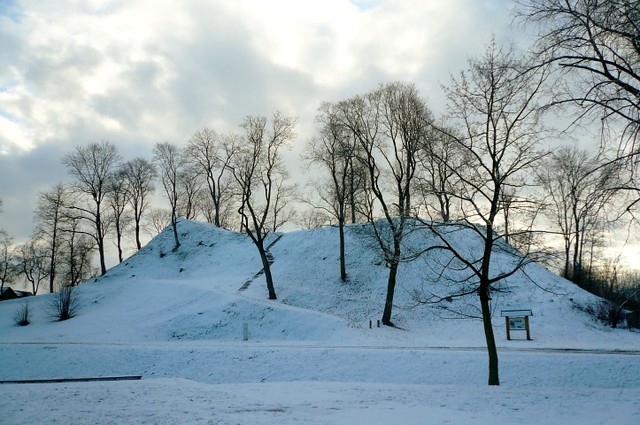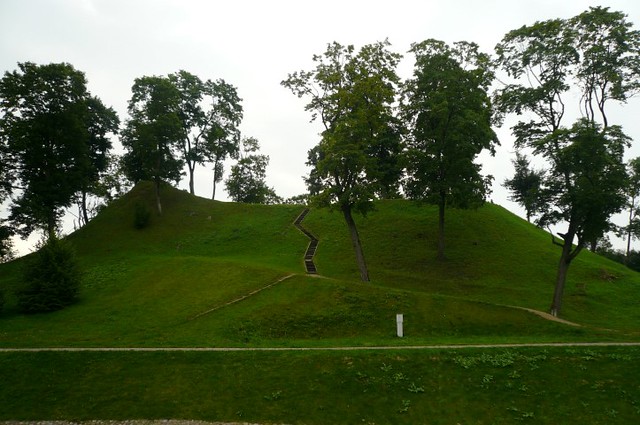The Lithuanian hillforts are a joint project of the Ice Age, which formed our land relief about 20,000 years ago, and human craft. Generally speaking, a hillfort is a natural hill fortified by people to hold a building structure (a castle or a fort), which was supported with different resources by the surrounding settlements and which was the place people could come for shelter in case of an enemy attack. The hillforts ceased to be important after the Battle of Grunwald/Tanenberg in 1410 when the military expansion of Crusaders was stopped and fortified wooden castles (they are called "motte and bailey") were left to their own devices or taken apart. Our hillforts today are in different shapes and sizes, many of them are overgrown with vegetation, ruined by farming, or completely forgotten. Some of them are accessible to tourists but, given their locations somewhere in the open fields or forests, tourist infrastructure isn't developed. Perhaps our most famous hillfort of Jurgaiciai (Domantai) even looks like one of the creepiest places in the world. I am referring to, of course, our (in)famous Hill of Crosses. Why? Pretty much that's why.
The exact number of Lithuanian hillforts is unknown, the different sources mention somewhere in the range from 700 to 1,000 hillforts. A hillfort was also characterized by having nearby settlements, holy pagan shrines, burial mounds, old roads of travel and trade. The density of hillforts in Lithuania is said to be the highest in the world. The first hillforts date back to the turn of II and I centuries B.C. and the oldest hillforts are in the eastern part of Lithuania. The "golden age" of the Lithuanian hillforts was the period of XIII- the beginning of XV century A.D. and it was due to the fact that our lands were aggressively attacked by Crusaders and we had to hold our ground somehow.
The life cycle of the Lithuanian hillforts is a long and complex story to be told in a single blog post, so feel free to refer to a professional text by dr. Gintautas Zabiela in English on a website dedicated specifically to hillforts of Lithuania: Hillforts of Lithuania (there is an English flag at the top of the page to switch to an English version).
Are there any hillforts in your country of origin? Share your thoughts in the comment section.
The exact number of Lithuanian hillforts is unknown, the different sources mention somewhere in the range from 700 to 1,000 hillforts. A hillfort was also characterized by having nearby settlements, holy pagan shrines, burial mounds, old roads of travel and trade. The density of hillforts in Lithuania is said to be the highest in the world. The first hillforts date back to the turn of II and I centuries B.C. and the oldest hillforts are in the eastern part of Lithuania. The "golden age" of the Lithuanian hillforts was the period of XIII- the beginning of XV century A.D. and it was due to the fact that our lands were aggressively attacked by Crusaders and we had to hold our ground somehow.
 |
| The Hillfort of Ukmerge in Winter. |
 |
| The Hillfort of Ukmerge in Summer. |
The life cycle of the Lithuanian hillforts is a long and complex story to be told in a single blog post, so feel free to refer to a professional text by dr. Gintautas Zabiela in English on a website dedicated specifically to hillforts of Lithuania: Hillforts of Lithuania (there is an English flag at the top of the page to switch to an English version).
Are there any hillforts in your country of origin? Share your thoughts in the comment section.
Comments
Post a Comment